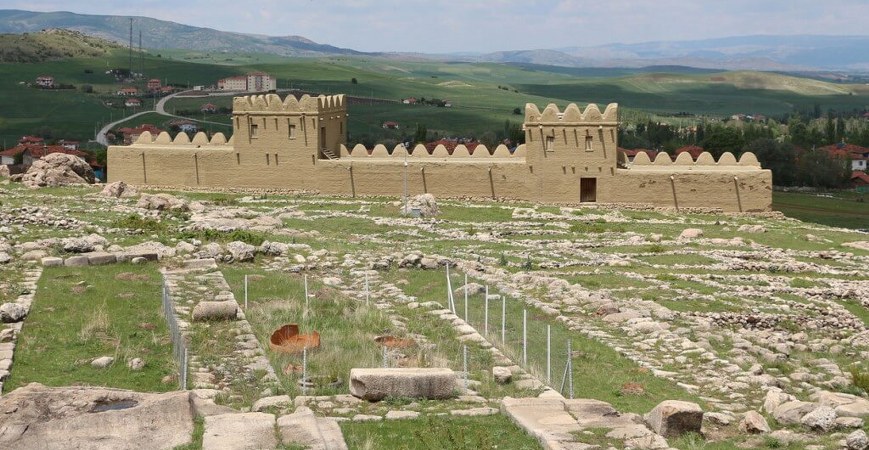Alacahoyuk Treasures Hattusa in Corum – Chapter 2,
It was decided to excavate. Dr. Remzi Oguz Arik and Dr. Hamit Zubeyr, Kosay were appointed as heads of the excavation team, and the Turkish Historical Institute allocated funds of 1000 lira to finance the excavations. The excavation team pocketed the 1000 lira and on August 21, 1935, arrived at Alaca. Excavations began in the village square the next day. Pieces of pottery from the third millennium BC and the Anatolian Early Bronze Age were found. However, soon the money began to run out and with the last few lira, a grave room was being cleaned. Archaeologists called this the Great Grave because it was the biggest of the six which were opened that year. The grave room was six meters long and four meters wide. The top layer of soil was removed. Small findings from recent periods were being uncovered. But at five meters in depth, the situation suddenly changed. Pieces of wood bowls with lips for pouring, skeletons, and bronze sun discs which were religious symbols were found. The archaeologists got excited. At the same time as they carefully removed the archaeological findings, they dug deeper. At a depth of six meters, they came upon a treasury. They found a gold crown, gold hair pins, a gold sword hilt, a gold ewer and a gold cup. Ornaments and gold discs from necklaces were scattered all around. They immediately gathered up the treasures and set guards to watch the grave. That night the excavation team couldn’t sleep from excitement and joy. The following morning of September 19, 1935, the excavation team was taken to Sungurlu by a two horse carriage in order to notify Ataturk by telegraph of what they had discovered. Upon receiving the telegram, Ataturk left Istanbul for An-kara on September 21, 1935, with the intention of going to Alacahoyuk and seeing the findings.
You will continue to find more details about Alacahoyuk Treasures Hattusa in Corum city of Turkey in chapter 3.



































































































































